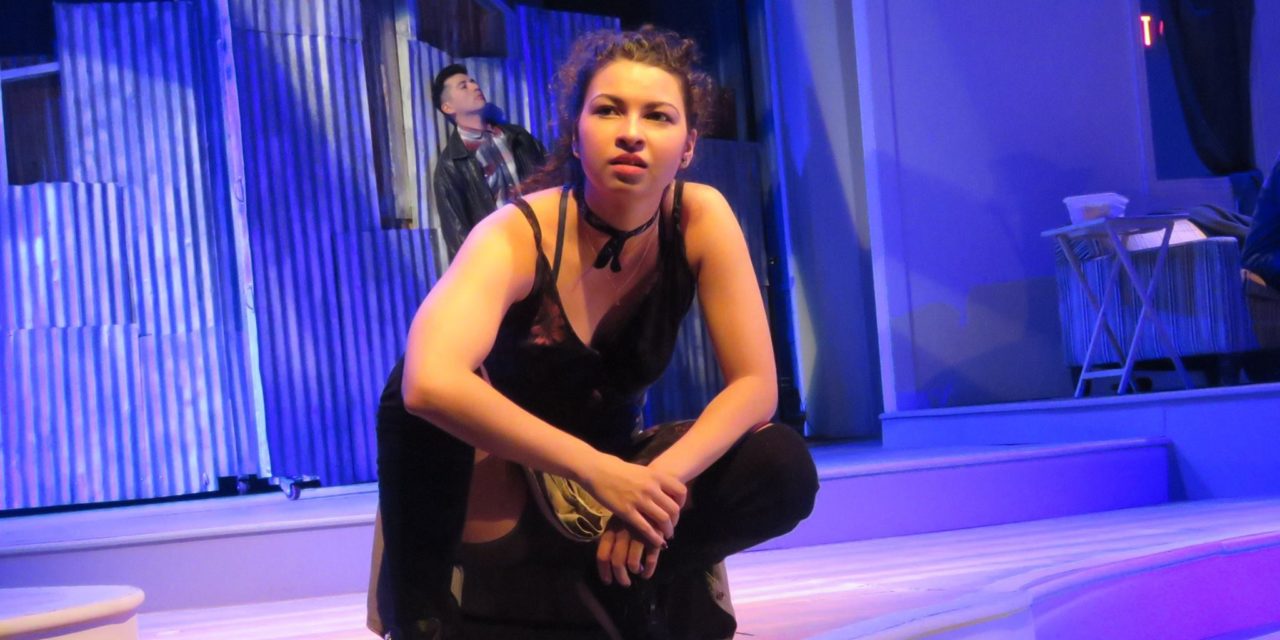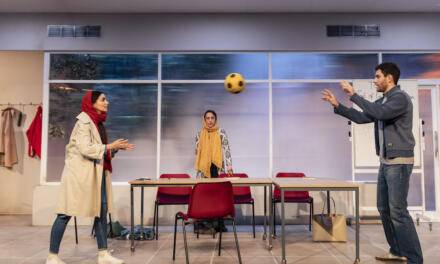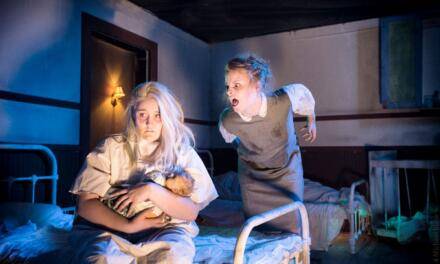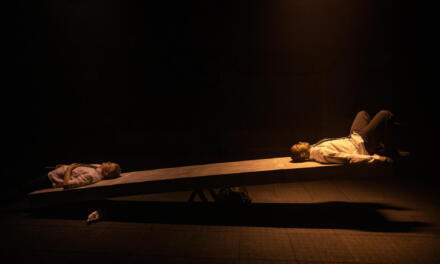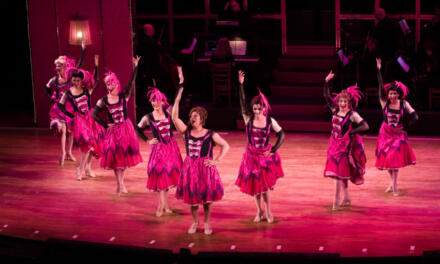Against the roar of asphalt and a set of wheels, a child looks out onto the horizon and tries to discern where they are and how they will live, if the earth is still with us, into old age. The sheer precarity of life tugs at their sleeves. The child, unnamed, just the Kid, like the outlaw, the sidekick, the one hitching a ride with a friend, is at the centre of my new play Red Bike. But who is this kid? And which America does this kid live in?
In these divided United States, much talk in the world of arts and culture, especially on the centre-left and progressive left-leaning side of the aisles, in the last several months since the 2016 Presidential election and its results, has centered on how is it that we resist direct and veiled signs of repression and oppression in our society? How can a political stand, against forces with whom we are indirectly complicit, be taken and by what means? It may seem a naïve set of questions. In fact, I would hazard that they are, because they presume that prior to November 2016, direct and/or veiled signs of repression, systemic oppression and punitive attacks on civil rights have not occurred: that, in effect, the US lived in an idyllic state of post-racial, post-sexist, post-class harmony barely indebted to policies and modes of living defined by a nearly slavish and myopic belief in neoliberal global capitalism, when there could be nothing further from the truth.
Ah, truth. The word of the moment. But whose truth(s) do we tell when we make theatre, and in what manner?
A colleague asks me, almost as a kind of easy short-hand many of us in the field have come to recognise these days as the seemingly inevitable question – if I am writing about President Trump. I think about this. I am not sure what to say. Aren’t we always writing to the moment but also toward the future? If Trump is not a character or visual signifier in a play, does his presence and what his Presidential win says about the triumph of the society of the spectacle factor any less in how I face the page?
Let me put this another way, and maybe in a slightly more aggressive mode. How does spectacle meet spectacle when one is working in a field where spectacle is one of the tools of the trade? When do the signifiers cancel each other out and just leave us with, well, the shell of spectacle?
But perhaps I am getting slightly ahead of myself here. Because you see, I never quite bought into the notion that the US was living in a post-racial, post-sexist, post-class transcendent near-utopia or even approaching it, for that matter. Not that that dream is not tantalising. But the fact remains that hearts and minds, bodies and souls, are shoved to the stagnant margins of the increasing, rampant shores of inequality every day, and while the promise of rebirth into a better life, a more dignified mode of existence on this planet in concert with humans and nature, is possible for some…maybe…, for many others it is not, and what are we as fellow citizens going to do about it? How, in effect, do we as artists think about the politics of caring in our work and how it is shared? Who is at the centre of our stories and why?
Huw Parmenter and Raymi Ortuste Quiroga of Chaskis Theatre, who are producing the reading of Red Bike at the Cervantes Theatre in London on 21 June at 19:30 starring Maddy Hill and Aaron Anthony under Simon Evans’ direction, recently spoke about Red Bike on a break from rehearsal, stressing the nature of the play’s empathetic lens: “The rehearsal room is always energised by our protagonist’s two-wheeled journey – we all seem to identify with him/her. Through the eyes of a child and the power of language, a very familiar reality is made strange without patronising our audience. Our point of view is one of innocence, hope, and natural compassion. We ride forward with an active, multi-coloured imagination, the courage to daydream something different and a ‘Superhero!’ defiance that tempts us to unlearn a little and do more.”

The Red Bike creative team (actors Maddy Hill and Aaron Anthony, director Simon Evans). Photo courtesy of Chaskis Theatre.
Perhaps the best we can do, I say to my colleague who waits for me to respond to the aforementioned seemingly inevitable question, is try to write from the inside of our characters and voices and landscapes. To locate the open heart that struggles with fear, uncertainty, and the worries of the heroic every day in the midst of vast, unanswerable questions about the why of anything, let alone a satisfying reason for what were multiple factors that led to a growing disaffection, dissatisfaction and feelings of disempowerment that cut across class, race (because the percentages bear this out, if we look at the national voting results), and gender identities when we look at the national voting results from the Presidential race as well as the one for the house of representatives.
To write a play at this time, fraught and troubling as it is the world over, is to ask oneself about the essential act of listening and re-hearing and re-seeing that theatre demands.
John Berger passed away this year and while, for some perhaps, he represented “old white guy aesthetics” and therefore, for some, a kind of arrogant dismissal of the profound and playful nature of his wide-ranging body of work, I would like to, just for a moment, reflect upon the field of enquiry that Berger opened up – one that took in not only an investigation into the nature of storytelling but also a consideration of resistance and the shape of its pocket (to paraphrase him slightly).
In making a piece of theatre, one that will live among others for a time and then (hopefully) live somehow in the haunted and unreliable palace of their collective memory, artists have at their disposal quite sturdy and simple tools that, despite the seductive pleasures of the digital age, still rely on essentially analogue means for their direct conveyance: we are in a room of some kind (outdoors or indoors, real and imagined), sharing something with someone, under a bit of light or darkness. The sharing can take many forms, but it usually involves some direct means of communication like words and gestures, perhaps commonly understood by all in attendance or partially so, depending on the work’s mode of delivery. The choices behind these modes, for the most part, have been made ahead of time by the artist who has tried to imagine what this moment – the moment of performance – will be like. The past and future co-exist even in the act of making a piece.
What happens to a field of vision that seems corrupted? What happens when the frame shifts and we can either not see the picture or see it from a different angle?
If we think of the field, to borrow a bit Berger’s concept of it, as one that radiates outward and thus allows the artist to not only paint it (or sculpt it or write it, etc) but to see beyond it, then the imaginary becomes a realm of, if not, infinite, then at very least glorious potentiality. The artist’s view may be negative or positive or poised in between, in that unsteady space where healing and wounding live in the same body. But the notion of seeing beyond the mimetic mere-ness of the field is crucial.
But, of course, first, you have to see it. Really see it. Walk into it, through it, touch the shrubs and flowers and tear out the weeds and feel the dirt under your fingernails. The act of seeing is hard work. As are acts of daily citizenship.
A friend asks me why I wrote Red Bike. Writers get asked this kind of question all the time. The expected answer tends to be one, I would assume, that has something to do with a particular sense of outrage at something that has happened in the world and/or in one’s personal life – enough of an outrage to stir up the fires of a play. I would not deny this. The fact of poverty in the United States alone makes me sick. The fact that people go hungry in what is ostensibly one of the richest countries in the world and where billions of dollars are spent on building up not only the military industrial, surveillance, technological complex, but also on another Marvel action movie, for instance, is enough to make one scream in despair.
We will never get to the bottom of class, and the socio-economic and political structures that keep the haves and the have-nots, the middle and the working poor, the rich and the indigent at systemic odds. We would have to dismantle so much to redefine how we live and what we value, moreover, that it would take several lifetimes if at that, to truly start over. However, if we think of the field as one of potentiality – the field of theatre, let’s say – then maybe one of the things we can offer as artists is a view of the world that both contains its despairing truths, and yet also celebrates the sheer joy of living. Because if we can’t locate that, then potentiality, and its attendant spiritual rewards, however fleeting, may not even be possible. And therefore, active resistance, one that is actually able to articulate, express and manifest a non-essentialised way of being (in the fullest sense of the word) will simply snag and tear away at the fabric of an already torn culture, rather than create, instead, a vibrant, transformative “pocket” (slightly altering, in part, Berger’s use of the word).
In Red Bike, I wanted to write about a child, poised on the brink of adolescence. Someone living in precisely one of those towns in the middle of this country for whom precarity is the norm. Someone too that did not have much history about where they’d been and how things got the way they are. Someone, in effect, innocent to the ways of the world and yet seeing enough of it to know that the kind of choices being made for them and to them on a daily basis might not be exactly in their best favor, and yet, for whom such choices seemed strange, paradoxically alluring in their “absoluteness,” but also ones that could be contested and rebelled against. There’s that inkling of rebellion that stirs up when children are locating their agency and position in the world that is full of exactly the kind of possibility that resistance taps into. I also wanted to touch the skin of a kind of warrior-like vulnerability that a child that has some means to travel, if only with a bike (and all of the complications surrounding its ownership) entailed, because once one travels, even just a few feet beyond one’s confines, the field shifts, the frame changes, and the mind and heart expand.
How do our children – navigate the contradictory, confusing terrain of this historical-socio-political time? What lessons are they learning? What will they carry on into their adult lives, and, in turn, what kind of future will their children leave the world?
The reading of Red Bike in London this month will be presented as a benefit for Anno’s Africa. Huw Parmenter and Raymi Ortuste Quiroga of Chaskis Theatre explain part of the reason for how this play meets their vision for the event: “The charity Anno’s Africa was a perfect fit for this piece. Founded by the parents of Anno Birkin, who sadly passed away just before his 21st birthday; the charity was set up with the profits of Anno’s poetry book: Who Said the Race is Over? This contained 55 poems selected from over 700 that he left behind. Anno’s Africa now provides arts opportunities for children living in slum conditions in Kenya. Their work is changing the lives of vulnerable children and giving them a chance to express themselves creatively. Yes, nobody said the race was over. It’s not. We’re happy to hop on our Red Bike and to drive our actions beyond London, raising funds and awareness for an important organisation.”
How, then, do we place those most vulnerable amongst us at the centre of our artistic and political discourse? Teasing this essential question is what calls me to the writing desk as I negotiate matters of non-denominational faith in times where strident ideologies rooted in or masquerading under denominational faith and value systems seek to undermine the worth of human, animal and earthly life.
Plays ask their audiences to see. To truly see. To be in the moment. But also to apprehend the moment after, where we may not have answers, but we may have at least some tools to get by. I want to think of those tools as ones that do not depend on any kind of big machinery. Spirit tools. Ripe with belief in the value of living a conscientious life.
[Caridad Svich is a text-builder and theatre-maker whose works for live performance have been seen across the US and abroad. She received the 2012 OBIE for Lifetime Achievement and the 2011 American Theatre Critics Association Primus. The reading will be presented as a benefit for the children’s art charity Anno’s Africa. For more information about RED BIKE, please visit www.chaskistheatre.com and www.caridadsvich.com]
This post was written by the author in their personal capacity.The opinions expressed in this article are the author’s own and do not reflect the view of The Theatre Times, their staff or collaborators.
This post was written by Caridad Svich.
The views expressed here belong to the author and do not necessarily reflect our views and opinions.

